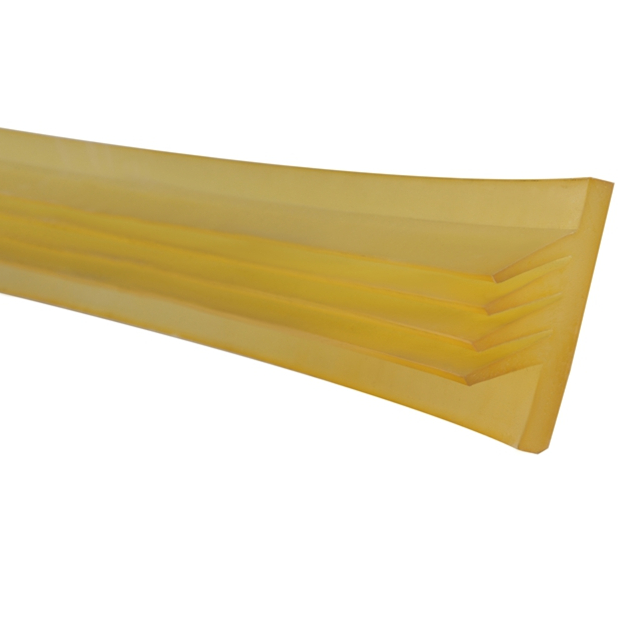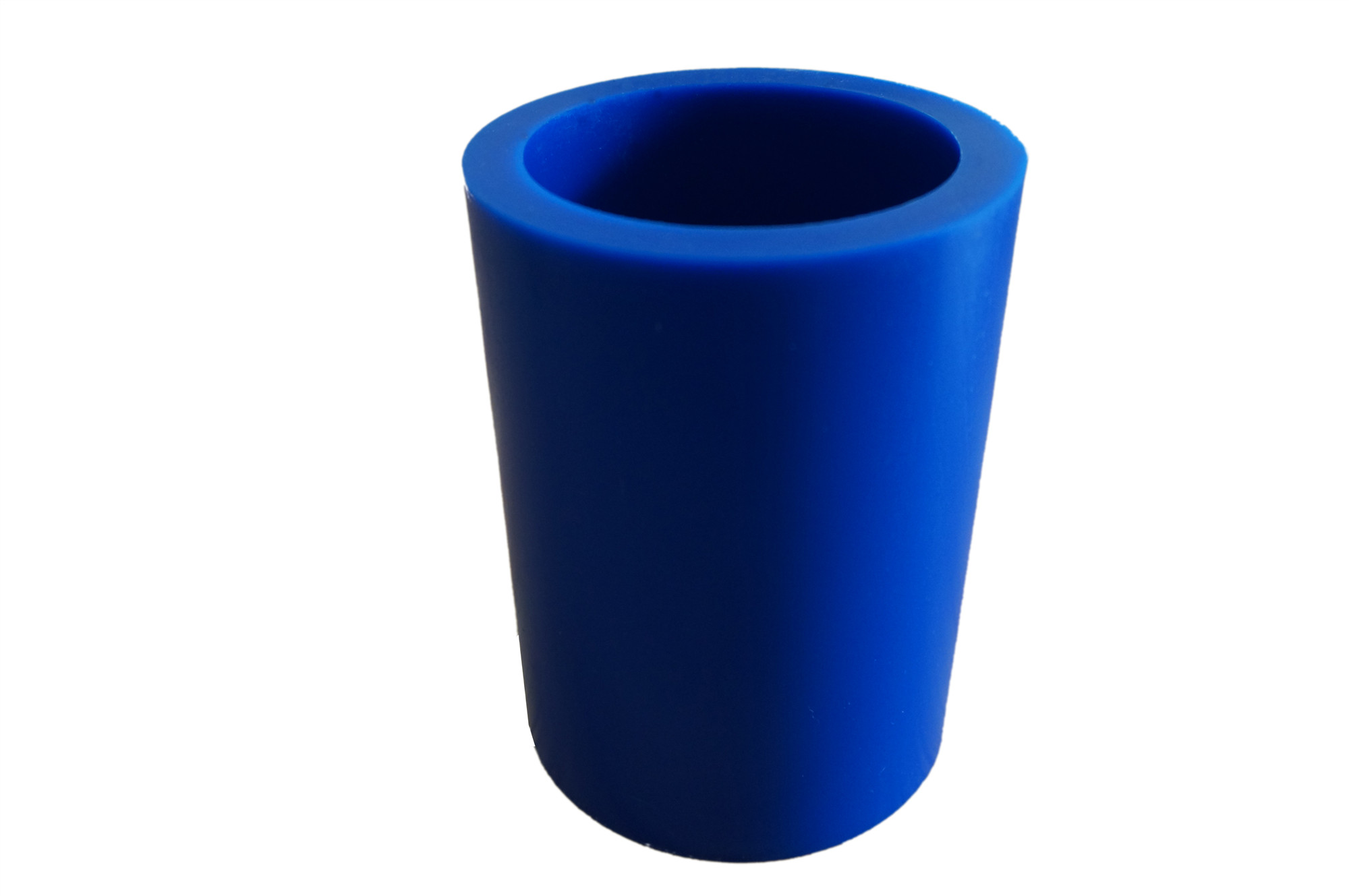Properties of Polyurethane Elastomers Part I
2019-01-04
1. Wear resistance
The wear resistance of polyurethane elastomer is very outstanding. The test results are generally in the range of 0.03-0.20 mm3/m, which is about 3-5 times that of natural rubber. In practical use, due to the influence of lubricants and other factors, its effect is often better. Wear resistance is closely related to tear strength and surface condition of materials. The tear strength of polyurethane elastomer is much higher than that of other rubber, but its friction coefficient is not low, generally above 0.5. It is necessary to add oil lubricant, or add a small amount of molybdenum disulfide or graphite, silicone oil, tetrafluoroethylene powder, etc. in order to reduce the friction coefficient and reduce friction heating. In addition, the friction coefficient is also related to material hardness and surface temperature. In all cases, the friction coefficient increases with the decrease of hardness and the increase of surface temperature. The maximum temperature is about 60 C.

Polyurethane Elastomer
2. Oil and drug resistance
Polyurethane elastomer, especially polyester polyurethane elastomer, is a kind of strong polar polymer material. The affinity of non-polar mineral oil is small, and it is almost not corroded in fuel oil (such as kerosene, gasoline) and mechanical oil (such as hydraulic oil, engine oil, lubricating oil, etc.). It is much better than general rubber and can be compared with NBR. However, it swells in alcohols, esters, ketones and aromatics, and gradually destroys at high temperatures. In halogenated hydrocarbons, swelling is significant and sometimes degradation occurs. Polyurethane elastomer immersed in inorganic solution is similar to immersion in water without catalyst. Degradation in weak acid and alkali solution is faster than in water.
The use temperature of polyurethane elastomer in oil is below 110 C, which is higher than that in air. However, in many engineering applications, oil is always polluted by water. Tests show that as long as the oil contains 0.02% water, almost all water can be transferred to the elastomer, and then the use effect will be significantly different.
3. Water resistance
The water resistance of polyurethane elastomers at room temperature is good, and there will be no obvious hydrolysis in one or two years, especially polybutadiene, polyether and polycarbonate. Through strengthening water resistance test and extrapolation method, it is concluded that the time required for the loss of tensile strength of polyester elastomer (polyethylene glycol adipate-TDI-MOCA) is 50 years, that is, polyether elastomer (PTMG-TDI-MOCA) is 5 times as long as polyester elastomer at 25 C in normal temperature water.
4. Heat and oxidation resistance
Polyurethane elastomer has good heat resistance in inert gas (such as nitrogen), oxygen resistance and ozone resistance at room temperature, especially polyester type. But the simultaneous action of high temperature and oxygen will accelerate the aging process of polyurethane. The upper limit of temperature for long-term continuous use of polyurethane elastomers in air is 80-90 C, 120 C in short time, and 170 C in some cases. The temperature which has a significant effect on thermal oxidation is about 130 C. According to the variety, the thermal oxidation resistance of polyester type is better than that of polyether type. Among the polyester type, the polyadipate type is better than the general polyester type. In polyether type, PTMG is better than PPG type, and all of them improve with the increase of elastomer hardness. In addition, the strength of general polyurethane elastomers decreases significantly at high temperature.
5. Low Temperature Performance
Polyurethane elastomers have good low temperature properties, which are mainly manifested in the low brittleness temperature (- 50 ~70 C), and some formulations (such as PCL-TDI-MOCA) are not brittle even at lower temperature. At the same time, the low temperature elasticity of decimal varieties (such as PTMG-TDI-MOCA) is also good. Compression cold resistance coefficient of -45 C can reach 0.2-0.5 level, but most varieties, especially some popular varieties, such as general polyester elastomer, have a high tendency to crystallize at low temperature and poor elasticity at low temperature. It is easy to leak oil in the primary phase when used as seals below - 20 C.
With the decrease of temperature, the hardness, tensile strength, tear strength and torsional rigidity of polyurethane elastomer increase significantly, while the springback and elongation decrease.

Low Temperature Resistant Polyurethane Cylinder Material
6. Vibration Absorption Performance
The effect of polyurethane elastomer on alternating stress shows obvious hysteresis. In this process, part of the energy of the external force is consumed by the internal friction of the elastomer molecule and transformed into heat energy. This characteristic is called material vibration absorption performance, also known as energy absorption performance or damping performance. Vibration absorption performance is usually expressed by attenuation coefficient. The attenuation coefficient represents the percentage of energy applied to a deformed material that can be absorbed. It is related not only to the properties of materials, but also to environmental temperature and vibration frequency. The higher the temperature, the lower the attenuation coefficient and the higher the vibration frequency, the greater the absorption energy. When the frequency is close to the relaxation time of macromolecule, the energy absorbed is the largest. At room temperature, polyurethane elastomer can absorb 10% - 20% of vibration energy, which is better than NBR. It is suitable to absorb large impact force when the deformation amplitude is small, but small impact force when the deformation amplitude is large.
In addition, the hysteresis phenomenon produces endogenous heat, which increases the temperature of elastomer. As the temperature of elastomer rises, its resilience increases and its shock absorption performance decreases, the balance of all properties must be considered in the design of shock absorbers.
Friendship Links:Winsin World Factory Network Shop
Copyright@ WINSIN MATERIALS,INC. 粤ICP备18139308号

 简体中文
简体中文 EN
EN 二维码
二维码
